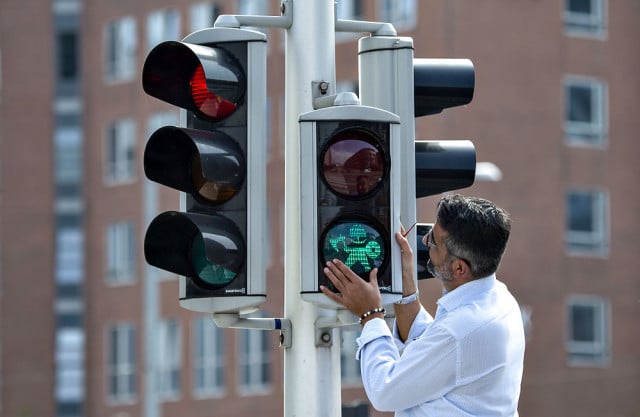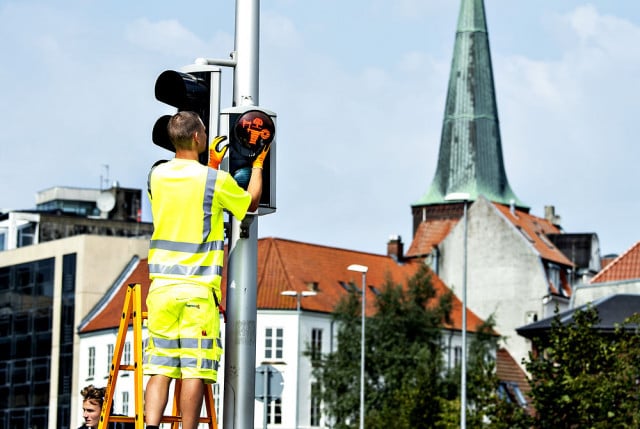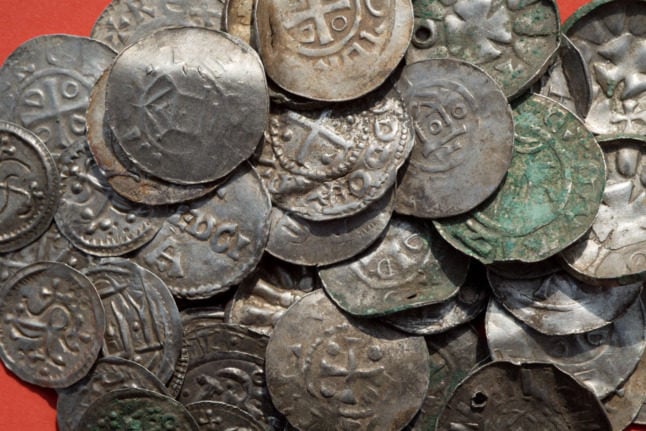The Viking-style lights are intended to symbolize Denmark’s second city’s close connection with the seafaring Scandinavian plunderers of centuries past.
Bünyamin Simsek, a councillor in the city planning department of Aarhus Municipality, came up with the idea for a Viking invasion of pedestrian crossings earlier this year.
Simsek wanted to “strengthen Aarhusianers’ identity and understanding of the fact we are a Viking city,” he told DR in March.
The idea has now become reality with the assistance of Moesgaard Museum, a major history and archaeology museum on the outside of the city, Aarhus Stiftstidende reported on Monday.

City coucellor Bünyamin Simsek puts one of the Viking lights in place. Photo: Henning Bagger/Ritzau Scanpix
Aarhus’ links Denmark’s Viking past is reflected in its streets, which have in many cases retained the layout of over 1,000 years ago.
“Many Danish cities had notable importance in the Viking era, but none other than Aarhus have retained their geographical layout since then. It’s no coincidence we have streets named Graven (The Ditch) and Volden (The Fortification),” Moesgaard Museum director Lars Krants said in an Aarhus Municipality press statement.
That is an important part of the city’s fabric and important to keep prominent in the urban picture, according to Simsek.
“Many people do not know about Aarhus’ special importance for the Viking period, and I want to change that. We want to tell the forgotten stories and rebrand Aarhus as the Viking city we are,” the city councillor said.
“On a modest budget, we can change selected pedestrian crossings and create value for both tourists and Aarhusianers,” he continued.

Photo: Henning Bagger/Ritzau Scanpix
Each of the new pedestrian crossings cost around 1,000 kroner to change from the regular variety, Aarhus Stiftstidende reports.
The new Viking lights can be spotted in several locations along the Nørre Allé road as well as close to the Dokk1 library and harbour.
READ ALSO: Thousands of objects discovered in Scandinavia's first Viking city



 Please whitelist us to continue reading.
Please whitelist us to continue reading.
Member comments